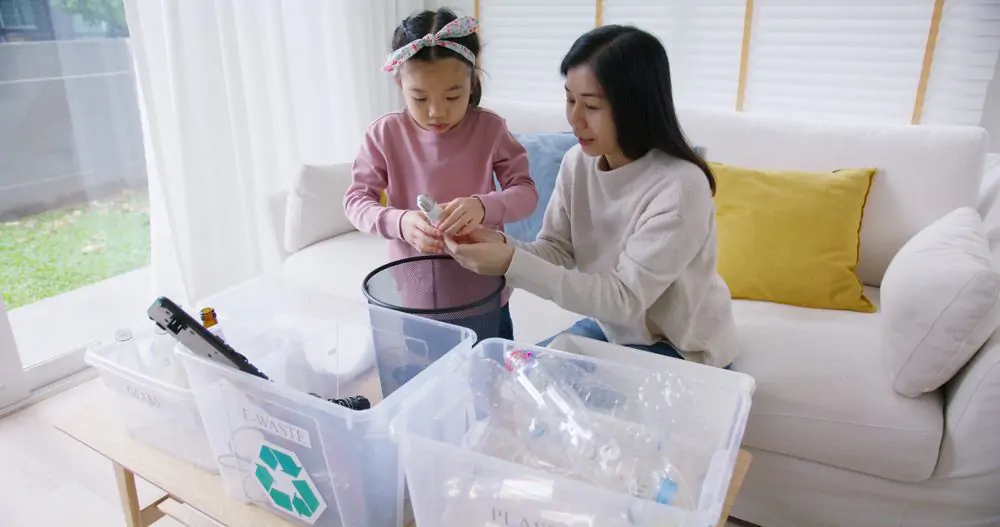Climate change is a global problem students need to learn more about. Read our top articles about climate change for students and prompts to start writing.
“We live in a strange world where children must sacrifice their own education in order to protest against the destruction of their future. Where the people who have contributed the least to this crisis are the ones who are going to be affected the most.” – Greta Thunberg
Greta Thunberg’s continuous demands for immediate action against climate change grabbed the attention of world leaders and inspired many others to support her cause. However, it comes with a price – she has to take a leave from school to meet other environmentalists and bring more attention to climate change.
Teaching students about the importance of the environment encourages them to contribute to finding solutions. Climate change is a critical issue moving many organizations and individuals to call for better handling of the matter. There are several published articles and essays on climate change, but more articles should focus on students’ involvement in the subject to urge them to do more.
Contents
- Examples of Articles About Climate Change for Students
- 1. Unleashing the Creativity of Teachers and Students to Combat Climate Change: An Opportunity for Global Leadership by Christina Kwauk and Rebecca Winthrop
- 2. Just for Kids: What’s Climate Change? And What Can I Do? by Allyson Shaw
- 3. Why Students Want Action on Climate Change by R.B. Brooks, M. Ed.
- 4. Students Express Understanding and Viewpoints About Climate Change by Sea Grant Pennsylvania
- 5. To Teach Students About Climate Change, ‘Just the Facts’ Isn’t Enough by Matthew Schneider-Mayerson
- Writing Prompts for Articles About Climate Change for Students
- 1. How to Effectively Explain Climate Change to Children
- 2. Ways Students Can Help Fight Climate Change
- 3. Teaching Students About Carbon Footprint
- 4. School-based Climate Initiatives
- 5. How Should Student Leaders Respond to Climate Change
- 6. The School’s Role in Becoming a Central Part of Climate Response
Examples of Articles About Climate Change for Students
1. Unleashing the Creativity of Teachers and Students to Combat Climate Change: An Opportunity for Global Leadership by Christina Kwauk and Rebecca Winthrop
“There is an opportunity for political leadership to spearhead what we are calling a new green learning agenda – a new way of educating and engaging children, youth, and adults in climate solutions – by unleashing the creativity of teachers and students to develop and implement climate action projects in their homes, schools, and communities.”
Teachers and students have a vital role in identifying the causes and combating the impacts of climate change through community-based climate action projects. Kwauk and Winthrop discuss the importance of global leaders investing in education and helping younger generations to develop the knowledge and skills to address this global crisis.
The pair draw from research illustrating how educating students about climate change helps avoid worse future scenarios. This includes reduced carbon dioxide emissions and lesser natural disasters. They also highlight how it improves students’ knowledge and skills so they can thrive in the real world. Additionally, the article presents steps to spur the education system and the public to support the green learning agenda.
Looking for more? You might be interested in these essays about natural disasters.
2. Just for Kids: What’s Climate Change? And What Can I Do? by Allyson Shaw
“There are plenty of ways kids can take action to fight climate change.”
The above article focuses on how kids can act in small ways to save the planet. It tackles the collaboration between Climate Reality Project and National Geographic Kids to provide resources on how youngsters can learn and get involved in solving climate issues.
Their project involves two magazines. One contains information to assist children in understanding how rising temperatures cause climate change. The second magazine includes thirteen ways kids can help, like the famous reduce, reuse, recycle, and other science-based details. It also demonstrates the importance of working together to find solutions. Check out these articles about Earth.
3. Why Students Want Action on Climate Change by R.B. Brooks, M. Ed.
“It’s important to note that while combating climate change requires a joint effort from parties across the globe, not all communities are impacted to the same degree and in the same ways by the negative outcomes of climate change. As students engage in advocacy and activism around racial, sexuality and gender, and disability justice, there are clear links between these issues and the climate crisis.”
This article focuses on how student activists are committed to educating the campus community on concerns about climate change. University leaders are maximizing their funds to work with the students on sustainable changes and resiliency plans to achieve climate justice.
Brooks also reports the findings from the study of the Intergovernmental Panel on Climate Change (IPCC), documenting the changes in the Earth’s climate and its predictions. After addressing how students and universities can help in the climate change crisis, the author presents organizations that offer resources and guidance for climate actions and awareness.
4. Students Express Understanding and Viewpoints About Climate Change by Sea Grant Pennsylvania
“Student essays about climate change offer unique perspectives on the problem, potential solutions, and their thoughts about short and long-term consequences.”
The above article features students’ essays on their understanding of science and climate change, including their ideas for solving it. A total of seven students expressed their opinions regarding various topics, such as the link between climate change in the incidents in the Arctic region, extreme weather conditions, food production, and others. Their essays include thorough and insightful discussions, all of which have brilliant and science-based solutions from which global leaders can learn. You may find these articles about geography for students helpful.
5. To Teach Students About Climate Change, ‘Just the Facts’ Isn’t Enough by Matthew Schneider-Mayerson
“As we are forced to confront the fact that the climate is connected to every aspect of our lives and the world around us, teachers at numerous levels, across multiple subjects, find themselves engaged in climagogy – teaching students about different aspects of the climate crisis.”
Schneider-Mayerson shares an effective way to educate students about the climate crisis. He notes that there are two critical elements often overlooked when teaching this global problem – emotion and individual effort. Taking emotions into account helps students prioritize how they feel about these global challenges and helps them battle climate anxiety. Meanwhile, individual effort is as important as collective actions to create positive impacts. For more, see these articles about pollution.
Writing Prompts for Articles About Climate Change for Students
1. How to Effectively Explain Climate Change to Children

There are numerous ways to help children understand climate change. Children effectively learn faster through games, self-discovery, and visuals. In your article, you can recommend playing educational videos or showing magazines that describe and explain the causes of climate change and its effect on the planet.
You can also write about how giving children goals to complete will make them understand serious issues like climate change faster. For instance, you can demonstrate proper waste disposal. Support your suggestions with research and advice from experts like educational and developmental psychologists.
2. Ways Students Can Help Fight Climate Change
Student activists are becoming more committed to taking climate action. To create a compelling article, start by discussing the global consequences of climate change and how it affects everyone. Then continue by enumerating all possible ways of helping the environment, from a small scale to a more collective approach. You can link examples or stories of people or organizations that have already started these actions.
3. Teaching Students About Carbon Footprint
Carbon footprint is the total amount of greenhouse gases a person produces. It’s a vital topic when discussing climate change. However, only some understand its consequences.
Dedicate your article to showing how carbon is emitted in every single action an individual takes and how these footprints contribute to global warming, including its effects on the climate. Identify the easy ways to reduce carbon footprint, targeting students’ standard practices, such as lesser use of electronic devices and plastic materials.
4. School-based Climate Initiatives
Schools are a place where brilliant minds are nurtured. You can start your article by focusing on schools’ importance in conveying climate change facts to their learners. Your article should encourage students and teachers that they have the power to protect the environment. Make sure to include sources about schools and student organizations that have already started making initiatives toward fighting climate change.
5. How Should Student Leaders Respond to Climate Change
Student leaders’ visions and values are critical factors in why their fellow students voted them for positions. For this prompt, focus your article on how student leaders can use their positions to motivate other students to know more about climate change.
For instance, you can write a step-by-step guide on how student leaders should respond to the crisis, like spreading climate change information on their school boards, producing an eco-group, and others.
6. The School’s Role in Becoming a Central Part of Climate Response

The United Nations believes that education is key to addressing climate change. In your article, tackle the initiatives involved in planning to make schools the center for a response against climate change.
There has to be a detailed plan on how each school member can participate in helping others understand the causes and effects of climate change. Cover this topic in your article, and discuss how schools can help educate the next generation on how to tackle climate change. For help editing your articles, we recommend using the best grammar checker. Our round-up profiles these tools and offers discounts.